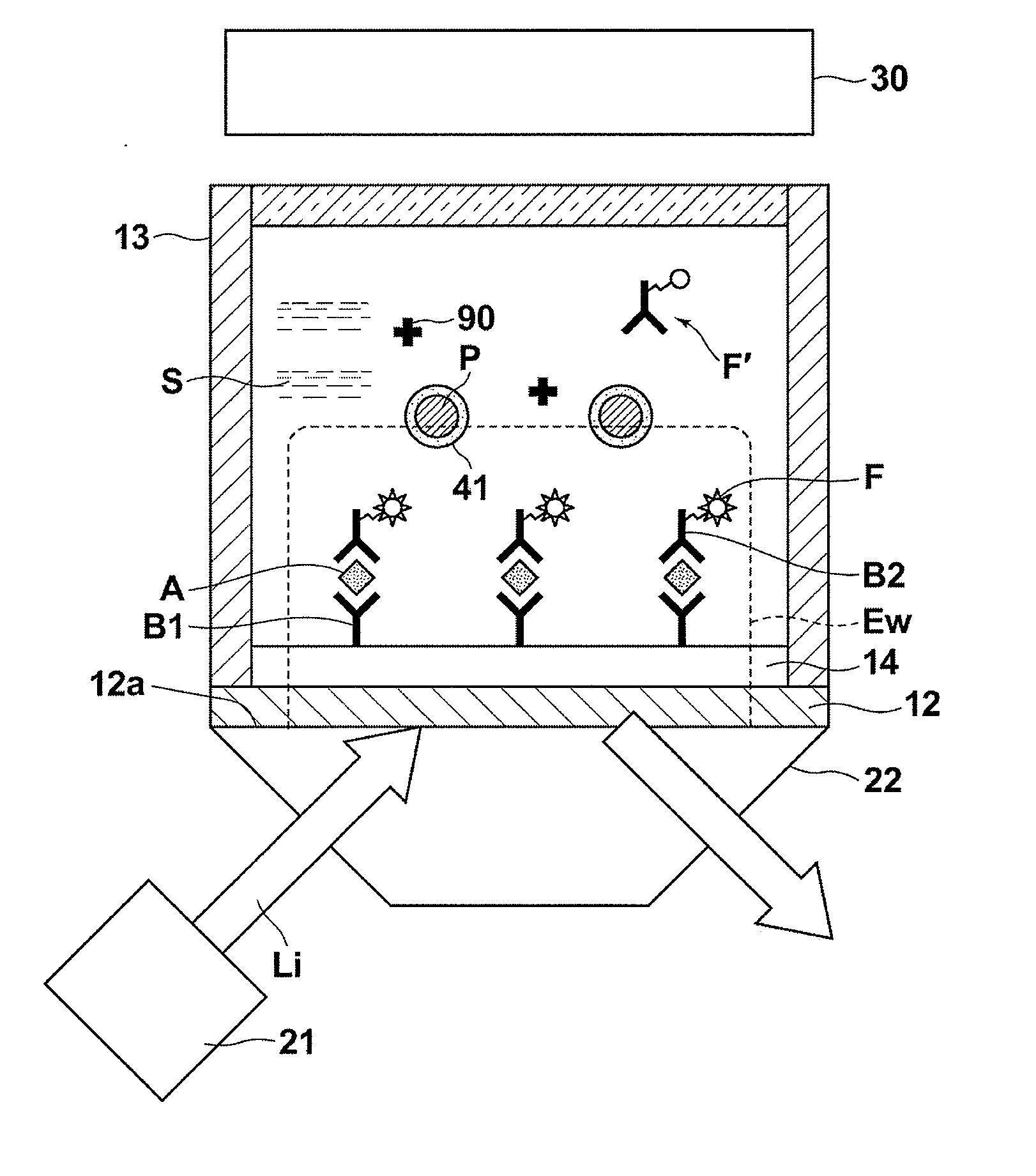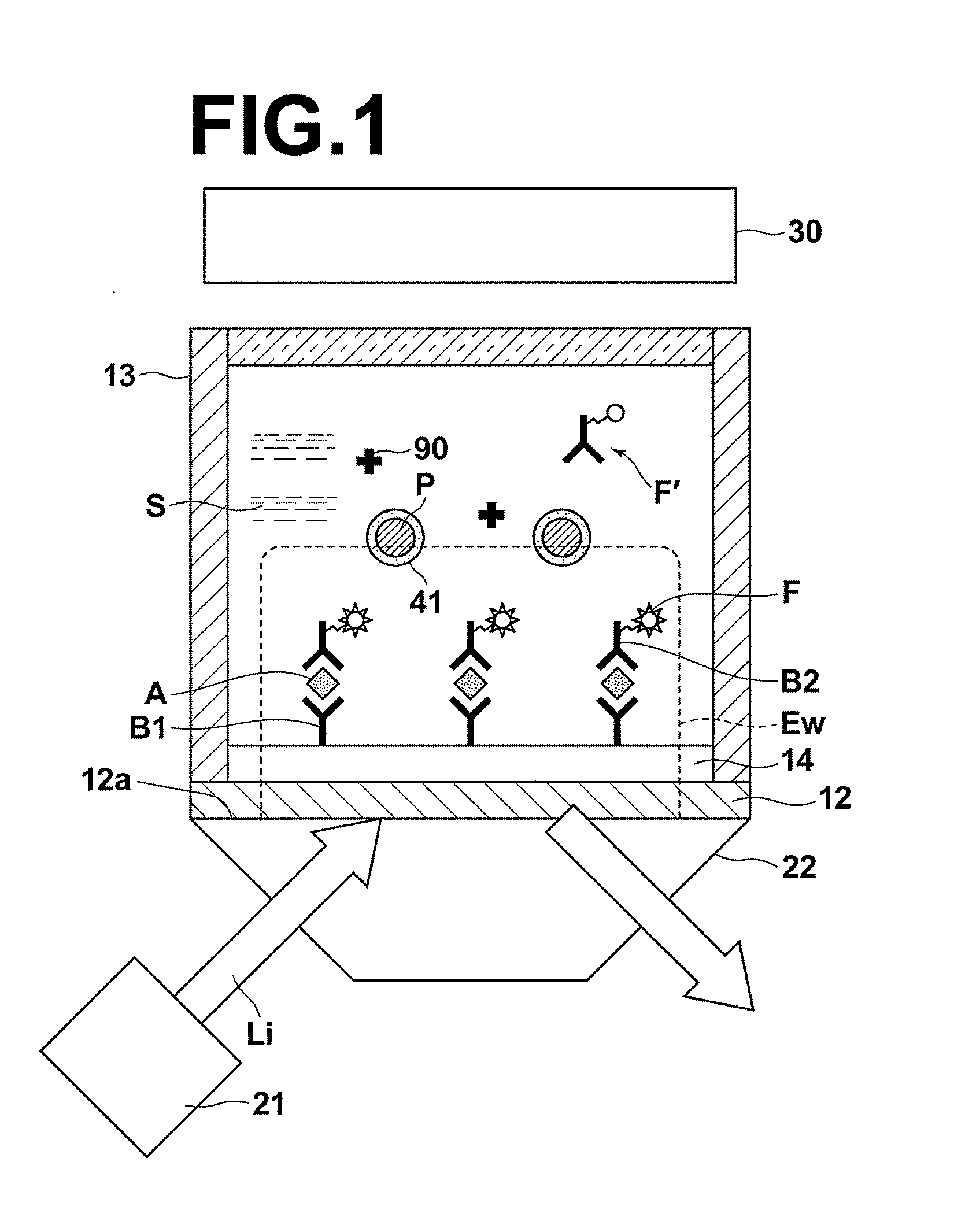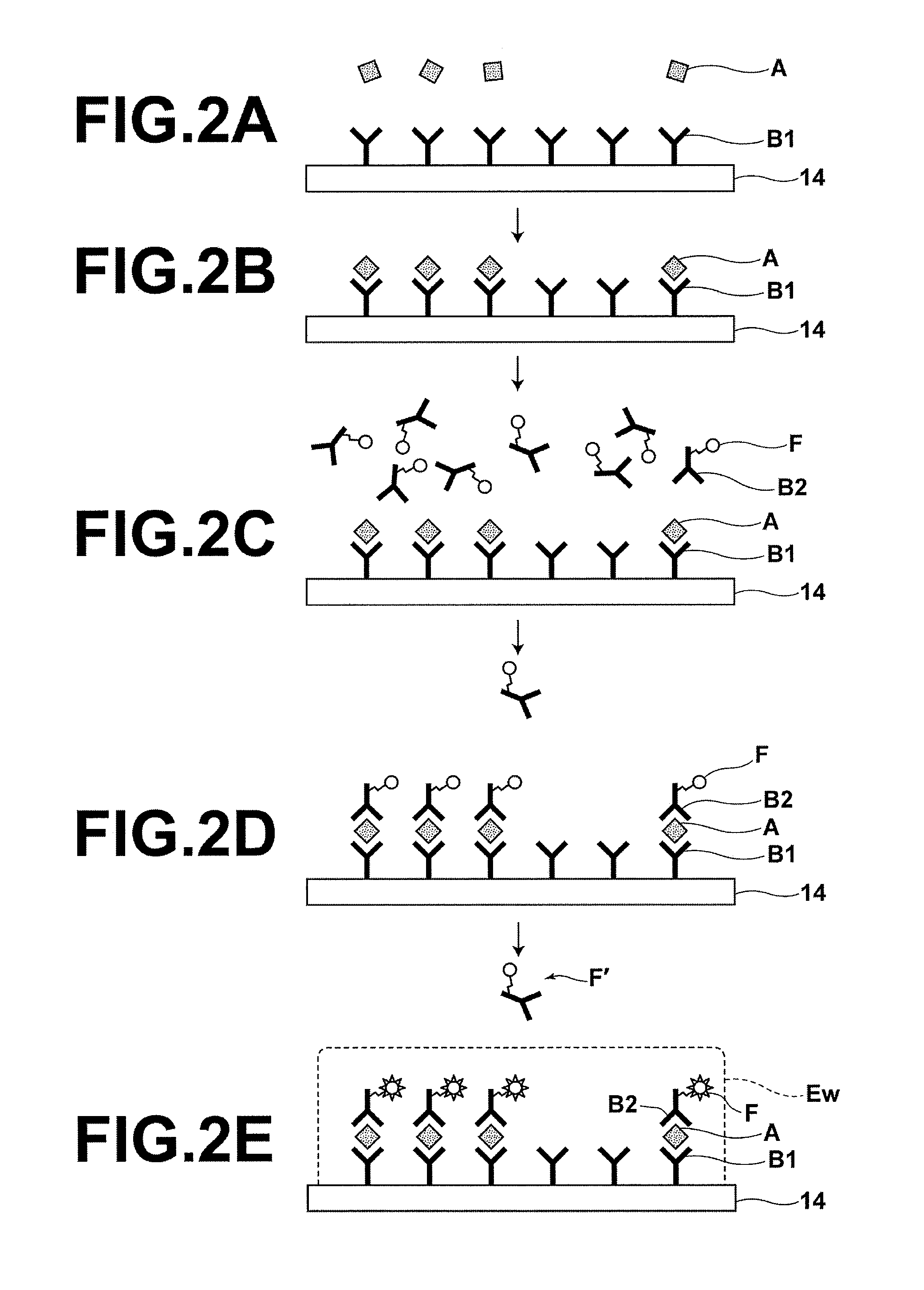Fluorescence detecting method
- Summary
- Abstract
- Description
- Claims
- Application Information
AI Technical Summary
Benefits of technology
Problems solved by technology
Method used
Image
Examples
first embodiment
[0040]FIG. 1 is a schematic sectional diagram that illustrates a fluorescence detecting apparatus that executes the fluorescence detecting method of the present invention. In the first embodiment, a case will be described in which an antigen A is detected as a detection target substance from a sample S that contains the antigen A.
[0041]As illustrated in FIG. 1, the fluorescence sensor is equipped with: a light source 21 that emits an excitation light beam Li of a predetermined wavelength; a dielectric prism substrate 22 formed by a material that transmits the excitation light beam Li, provided to cause the excitation light beam Li to propagate therethrough from a first side thereof; a metal film 12, provided on a second side of the dielectric prism substrate 22; a non flexible film 14 which is formed on the metal film 12; primary antibodies which are immobilized onto the non flexible film 14 and that specifically bind with the antigens A; a sample holding section 13 that holds the s...
second embodiment
[0084]FIG. 4 is a schematic sectional diagram that illustrates the vicinity of a detecting portion, on which fine metallic particles P are dispersed, in a fluorescence detecting apparatus that executes a fluorescence detecting method according to a second embodiment of the present invention. The fluorescence detecting apparatus which is utilized in the second embodiment is the same as that which is illustrated in FIG. 1 and was described as the first embodiment. Meanwhile, the fluorescence detecting method according to the second embodiment differs from the fluorescence detecting method according to the first embodiment in that the wavelength of the excitation light beam Li is a specific wavelength which is capable of inducing localized plasmon in the fine metallic particles P. For this reason, the elements of the fluorescence detecting apparatuses are the same, and detailed descriptions of the elements will be omitted insofar as they are not particularly necessary.
[0085]In the fluo...
third embodiment
[0091]FIG. 5 is a schematic sectional diagram that illustrates the vicinity of a detecting portion, on which fine metallic particles P are dispersed, in a fluorescence detecting apparatus that executes a fluorescence detecting method according to a third embodiment of the present invention. The fluorescence detecting apparatus which is utilized in the third embodiment is the same as that which is illustrated in FIG. 1 and was described as the first embodiment. However, the fluorescence detecting method of the third embodiment differs from the fluorescence detecting method of the first embodiment, in that fluorescent labels which are used to label a detection target substance are constituted by an anti quenching fluorescent material, in which fluorescent pigment molecules are enveloped in an anti quenching material that transmits fluorescence generated by the fluorescent pigment molecules and prevents metallic quenching, and in that the dielectric layers 41 that cover the fine metall...
PUM
 Login to View More
Login to View More Abstract
Description
Claims
Application Information
 Login to View More
Login to View More - R&D
- Intellectual Property
- Life Sciences
- Materials
- Tech Scout
- Unparalleled Data Quality
- Higher Quality Content
- 60% Fewer Hallucinations
Browse by: Latest US Patents, China's latest patents, Technical Efficacy Thesaurus, Application Domain, Technology Topic, Popular Technical Reports.
© 2025 PatSnap. All rights reserved.Legal|Privacy policy|Modern Slavery Act Transparency Statement|Sitemap|About US| Contact US: help@patsnap.com



